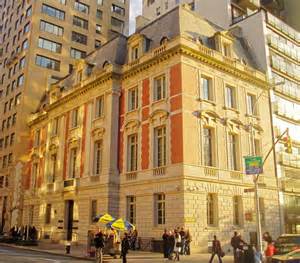Oct 9 2025 - Jan 12 2026
New York City, NY
A presentation of nearly 40 works, ranging from the artist's student years through his experience behind the frontlines as a medical orderly during World War I.
Neue Galerie New York is pleased to announce an important monographic exhibition on the German Expressionist artist Erich Heckel (1883-1970), opening October 9, 2025. This presentation will include nearly 40 works ranging in date from 1905 to 1920, from his student years through his experience behind the frontlines as a medical orderly during World War I. The show, on view through January 12, 2026, highlights major works in the museum’s collection alongside notable loans from the Harvard Art Museums, the Metropolitan Museum of Art, the Museum of Modern Art, and the Virginia Museum of Fine Arts in Richmond, among others.
The first presentation of Heckel’s work in the United States was held in New York just over a century ago in 1923 at the Anderson Galleries. At the time, German American art historian and curator, William R. Valentiner, described Heckel’s nature as “tender and lyrical” while praising his “romantic imagination” and the “other-worldly beauty” of his landscapes. Although he had trained as an architect at Dresden’s Technische Hochschule (Technical College), Heckel proved to be a strong and expressive painter and was equally innovative as a printmaker. This exhibition celebrates his accomplishments in both fields and confirms his talent as a figurative and landscape artist.
Heckel was a founding member of the Brücke (Bridge) Artists’ Group established in Dresden in June 1905 and he played a key role in the group’s success. As chief organizer of their exhibitions from 1905 he was instrumental in the Brücke’s first museum show in 1907 held at the Folkwang Museum in 1907, and he remained a vital figure in the group until it disbanded in 1913.
The raucous colors and loose and expressive brushstrokes that defined his earliest works with the Brücke, especially his bucolic outdoor scenes, such as the ebullient Bathers in a Pond (1909), and his intimate studio scenes like the early self-portrait entitled Seated Man (1909), are replaced by a darker palette and spikey brushstrokes after Heckel moved to Berlin in December 1911 to join his other Brücke colleagues. The most significant work in the exhibition is the triptych, To the Convalescent Woman (1912-13), which centers on his future wife, the dancer Siddi Riha. The couple met in December 1910, and she became his muse, modeling for many of his paintings, drawings, prints, and sculptures. Siddi is featured in several other works in the show, including the 1913 canvas Siblings, where she is shown alongside her younger brother. Both paintings are recognized as masterpieces of the late Brücke style.
Another special aspect of the presentation will be a fulsome display of Heckel’s prints. Woodcut in particular reached a pinnacle in the early sixteenth century when German artists such as Albrecht Dürer and Lucas Cranach made their mark; Brücke artists revitalized the technique and made noteworthy contributions to modernism through their efforts in printmaking, which helped to disseminate their radical style. Heckel remained dedicated to pursuing printmaking throughout his long career, and he made groundbreaking strides in his search for a new and unpolished pictorial language. Some of his woodcuts were printed in extremely limited quantities. This show offers the chance to view these rare items alongside paintings and drawings by the artist to better appreciate the crucial dialogue that exists between these media.
Credit: Exhibition overview from museum website
Exhibition Venues & Dates
Oct 9 2025 - Jan 12 2026
New York City, NY
